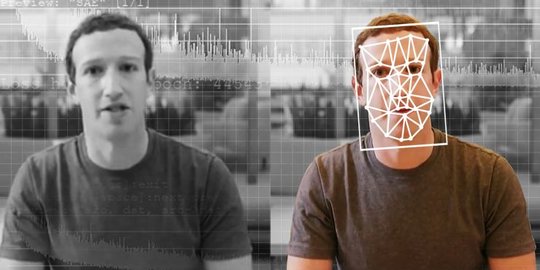Merdeka.com – Researchers finally developed a device that can identify fake photos produced by deepfake technology. This can be known in a sophisticated way through the reflection of light in the eye.
This tool proved to be 94 percent effective in their research received at the IEEE International Conference on Acoustics, Speech and Signal Processing which will be held in June 2021 in Toronto, Canada.
“The cornea of the eye is almost like a perfect semisphere and is highly reflective,” said the paper’s lead author, Siwei Lyu, PhD, Professor of the Department of Computer Science and Engineering.
So, according to Lyu, “anything that enters the eye with light emitted from that source will have an image on the cornea.”
“The two eyes must have very similar reflective patterns because they see the same thing. This is something we usually don’t notice when we look at faces,” said Lyu, who also has expertise in digital forensics and multimedia. .com.
Currently, the paper entitled “Exposing GAN-Generated Faces Using Inconsistent Corneal Specular Highlights” is available in the open access arXiv repository.
The research also involved Shu Hu, a third-year PhD candidate in computer science and research assistant at the Media Forensic Lab at UB, and Yuezun Li, PhD, a former senior research scientist at UB who is currently a lecturer at the Center for Artificial Intelligence at Ocean University of China.
How the Tool Works
When we see something, a picture of what we see is reflected in the eye. In the original photo or video, the reflection in the eye will generally appear to be the same shape and color.
However, most images generated by artificial intelligence, including generative adversary network (GAN) images, fail to do this accurately or consistently. Likely, it is because many photos have been combined to produce an artificial image.
The tool Lyu developed takes advantage of this gap by looking at small deviations in the reflection of light inside the eye in a deepfake photo.
To conduct the experiment, the research team obtained original images from Flickr Faces-HQ, as well as artificial images from the artificial intelligence-looking artificial face repository website.
This tool works by mapping each face. Then examine the eye, followed by the eyeball, and finally the light reflected on each eyeball. It compares potential differences in the shape, intensity of light, and other features of reflected light.
– .

:quality(80)/cdn-kiosk-api.telegraaf.nl/1a395308-9939-11eb-bc56-02d2fb1aa1d7.jpg)
